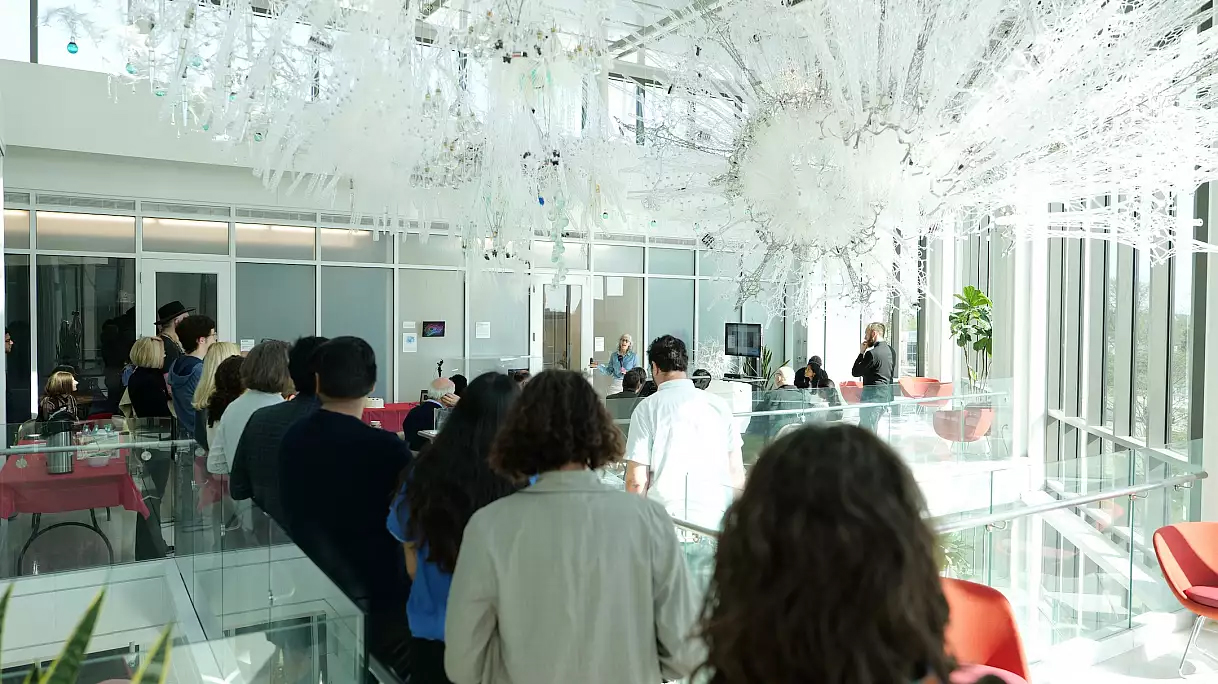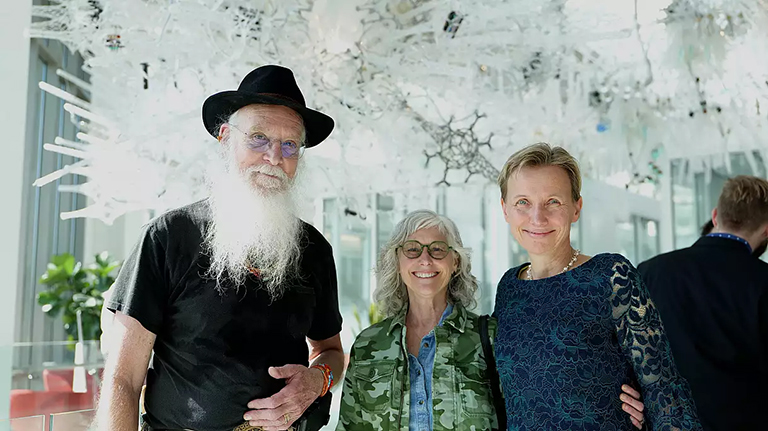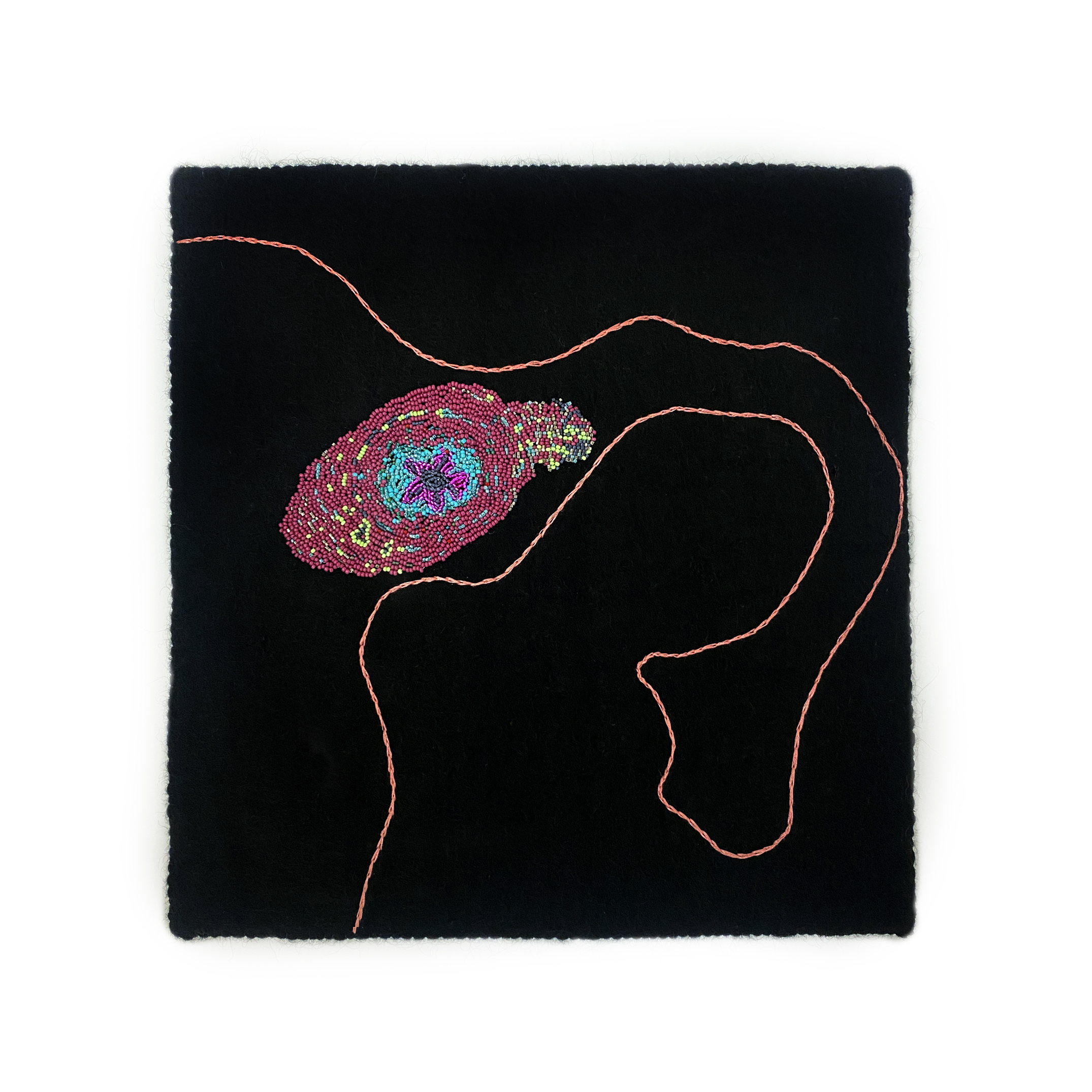Source: Luddy School of Informatics, Computing, and Engineering
The Luddy School hosted a seventh birthday celebration like no other by honoring Amatria, the living sculpture that works science-as-sentient-architecture magic.
Celebration began with sunlight streaming into Luddy Hall’s fourth floor. Katy Börner, Luddy School of Informatics, Computing, and Engineering Victor H. Yngve Professor of Engineering and Information Science and director of the Cyberinfrastructure for Network Science (CNS) Center, embraced a seventh birthday like no other last Friday with fifty artists, researchers and supporters.
Elizabeth Record, associate director for the CNS Center, and Nicole C Johnson, CNS Center assistant, along with Data Science master’s student Meryl Sarah Jacob, organized the event.
Looming above from the atrium ceiling, Amatria worked science-as- sentient-architecture magic. Flashes of light, a rustle of movement and a sense of vast intelligence radiated from a luminous, forest-inspired landscape of soaring clouds and tangled thickets.
“It’s a dream come true to have Amatria here,” Börner said.
Amatria, created by Philip Beesley, a multidisciplinary artist, designer and professor at the University of Waterloo School of Architecture in Ontario, is a living sculpture imbued with artificial intelligence that, by using light and motion sensors, reacts to stimuli of visitors with unique sounds, movements and changing colors.
Amatria was designed to suggest the emergence of life during the birth of the universe. It foreshadows a future where the Internet of Things is omnipresent and displays how embedded technologies affect humans who inhabit their spaces.
Börner talked of hope and growth and maintaining the birthday celebration’s experience and energy, highlighted by surrounding displays of art inspired by nature.
Beasley came to Bloomington for 20 hours to join the celebration. In his remarks, he said that Amatria is a female oscillating from “The Mother,” to “The Not Mother,” to “The Becoming Mother.” He said Amatria embodies the movement from mineral into life as part of a “deeply, deeply sensory world of experience.”
He offered a philosophical meditation on Amatria’s name with the “idea I am one; that I am clear; that I am responsible; that I can take responsibility and can be relied on; that I have a name and have one body.”
“Those questions start to slip away sometimes in times like we live in today,” he said. “It seems hollow, fragile, trembling.
“I hope that meditation and renewal of that language through very deliberate and unapologetic wise empathy might be a contribution.”
Andreas Bueckle, CNS Research Lead, showed photos from previous Amatria celebrations and other events, including one from a couple of years ago that featured robots from the Luddy Artificial Intelligence Center and the Luddy School’s David Crandall, director of Luddy Artificial Intelligence Center and Luddy professor of Computer Science; and Selma Šabanović, professor of Informatics and Cognitive Science and associate dean for faculty affairs, as well as a visit by then Indiana Governor Eric Holcomb. Bueckle mentioned the impact Amatria can have, saying that at times, “It looks like she’s smiling at you.”




